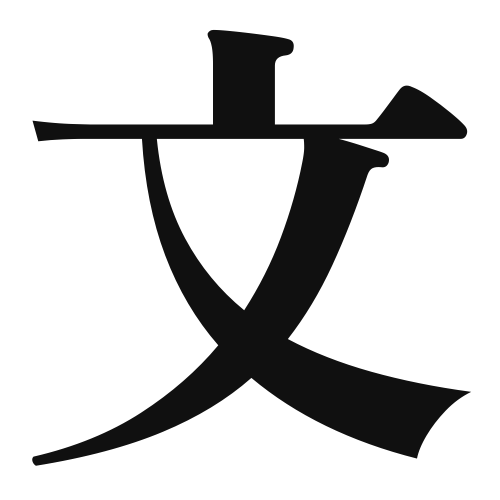1. Overview of Meaning
The kanji “文” (pronounced “bun” or “mon”) primarily means “sentence,” “literature,” or “writing.” It represents the concept of written language and communication.
2. Formation and Radical
The kanji “文” is classified as a pictogram, which means it originated from a visual representation. It depicts the idea of patterns or lines, symbolizing written characters. The radical for “文” is also “文,” which signifies writing or literature.
3. Examples of Usage
Common words and phrases that include “文” are:
- 文学 (bungaku) – literature
- 文書 (bunsho) – document
- 文章 (bunshou) – text or composition
Example sentences in daily conversation:
- この文はとても面白いです。 (This sentence is very interesting.)
- 彼は文学が好きです。 (He likes literature.)
4. Synonyms and Antonyms
Similar kanji with related meanings include:
- 字 (ji) – character or letter (refers more to individual letters rather than sentences)
- 書 (sho) – writing (more focused on the act of writing)
Antonyms include:
- 無 (mu) – nothing or absence (contrasting the presence of written language)
5. Cultural and Historical Background
The kanji “文” is deeply connected to Japanese culture, as it represents the foundation of written communication. It is often used in proverbs and idiomatic expressions, such as:
- 文は人なり (Bun wa hito nari) – “The writing reflects the person,” emphasizing that one’s writing style reveals their character.
- 文句を言う (Monku o iu) – “to complain,” which literally translates to “to say sentences.”
